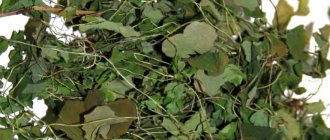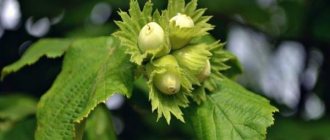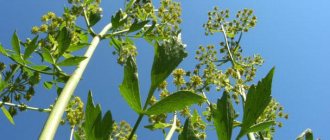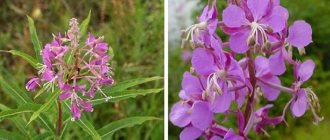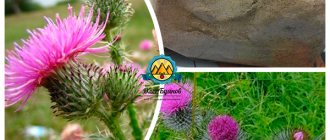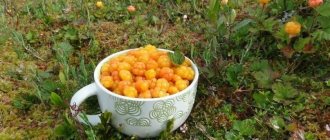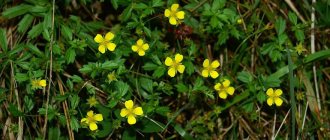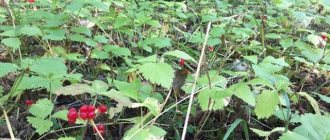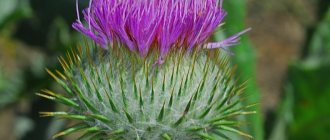The beautiful and very delicate plant impatiens (impatiens family) belongs to a large genus called Impatiens. It has over 500 plant species. The garden “career” of these plants developed with varying success: there was a time when they were admired, and then undeservedly forgotten.
Today, they are again attracting the attention of gardeners and flower lovers. Yellow, purple, crimson, pink flowers, long flowering are the main distinguishing features of these plants.
Spreading
The impatiens are native to the Himalayas. It was brought in as an ornamental plant. Prefers moist, shady areas and grows along the banks of rivers and lakes. The plant grows under natural conditions most often in tropical Africa and Asia, some representatives of the genus grow in America and Europe.
In our country, almost everywhere you can find impatiens vulgaris with small or large yellow flowers, as well as glandular, which has pink flowers. We will talk about them in this article.
Impatiens vulgare
Herbaceous annual plant up to 80 cm high with an erect succulent stem and fibrous branched root. The leaves are petiolate, alternate, with large teeth along the edge, oval.
The flowers are drooping, irregular, lemon-yellow in color, with a spur, usually collected in racemes. The fruit is an oblong capsule. During ripening, when you touch it, it cracks and forcefully throws out the seeds contained inside. Impatiens vulgaris blooms from the second half of June until the end of September. Prefers damp, shaded areas and forms impenetrable thickets.
The chemical composition of this plant has not yet been sufficiently studied. It is known for certain that during flowering, impatiens contain 68.5% vitamin C.
Forest balsam
You can find balsam in a forest area on the banks of a stream or river, as well as in ravines, where the ground is damp and dark . It has alternate leaves of an ovoid oblong shape, the edges of which are coarsely toothed. The inflorescences are yellow, brush-shaped, and have a spur. Moreover, the flowers themselves are irregular in shape, five-petaled, of which four grow together in pairs.
The stems and leaves of forest balsam are fleshy, juicy, and rich green in color. The fruit of the "impatiens" is an oblong capsule with five curling flaps.
Use of impatiens vulgare
The plant is used only by traditional healers. An infusion of the herb is taken as an anti-inflammatory and diuretic for diseases of the bladder, kidneys, edema, and kidney stones. In addition, it is also used as an emetic. Wounds and ulcers are washed with infusion of herbs. Baths with infusion give a good effect for joint pain. Crushed leaves are applied to bruises and hemorrhoids.
Impatiens vulgaris has long been successfully used by folk healers. For medicinal use, the plant is cut off entirely during flowering. Dry the raw materials by laying them out in the shade or in a well-ventilated area. Impatiens is used for external and internal bleeding, for stones in the bladder and kidneys.
The healing properties of balsam
This plant contains a large amount of ascorbic acid, but only during the flowering period. In addition, the stems and leaves of the plant contain alkaloids, acids, glycosides, flavonoids and tannins.
"Impatiens" is an excellent wound-healing and anti-inflammatory agent for external use. To wash wounds, including purulent ones, as well as ulcers and hemorrhoidal cones, a decoction of balsam is used. The decoction is prepared at the rate of one tablespoon per glass of boiling water; when the decoction has cooled, a gauze swab is moistened in it, which is then applied to the inflamed surface.
Freshly squeezed juice from balsam leaves is also excellent for healing wounds and soothing pain, but it should be used with great caution.
The main medicinal properties of balsam, for which it is so valued in folk medicine, are its beneficial effects on the kidneys and the entire urinary system . Balsam has proven itself in the treatment of kidney and bladder stones. The substances contained in it grind the stones into sand and remove them smoothly. In addition, the plant contains compounds that help remove excess fluid from the body.
You need to take the infusion and decoction of this herb strictly in doses, remembering that it is poisonous. In order to prepare the infusion, take one teaspoon of balsam leaves and stems, pour a glass of boiling water, and infuse for 20 minutes in a warm place. Take no more than one tablespoon of balsam infusion per meal, and no more than two tablespoons per day.
In addition to urolithiasis, balsam is used to treat gout and rheumatism: they use baths with the addition of a concentrated decoction, and also take one tablespoon of herbal infusion orally after meals.
Preparing the infusion
Brew two tablespoons (tablespoons) of crushed raw materials into 500 ml of boiling water in a thermos. Leave it to steep for five hours. After this time, strain. Take the product warm. During the day you need to drink 200 ml of the product in equal parts. Impatiens acts on the uterus, causing its intense contraction with heavy bleeding. In addition, this infusion is recommended for the treatment of bleeding from the bladder and rectum. It is used externally to treat ulcers, wounds, and hemorrhoids.
Impatiens vulgaris is a honey-bearing, medicinal, dyeing and poisonous plant. You shouldn’t get carried away with self-medication, even if someone you know advises you to “drink weed.”
Impatiens glandular: description
This is also an annual. Grows up to two meters. The stems are straight, have internodes, often transparent, juicy, filled with juice. The leaves are alternate, elliptical in shape, entire. The plate is shiny and delicate. Their length is 10 cm, the edges are jagged.
The second name of the plant is ferruginous balsam (iron-bearing balsam). The stem of the plant is thick, highly branched, knotty, and succulent. The leaves are ovate-lanceolate and can reach 12 cm in length. They are serrated along the edges, with winged petioles. At the top of the stem they gather in whorls.
The wine-red, white, and pink flowers of this type of impatiens are large, simple, and collected in umbrella-shaped clusters of 10-14 pieces. The petals are 3-3.5 cm long. The flowers have a delicate and delicate scent and are pollinated by various insects, but most often by bumblebees.
Impatiens glandular has interesting features. During flowering, its leaves secrete drops of sweet and aromatic juice along the edges, which forms sugar crystals upon evaporation. They attract ants. During flowering, the peduncles lengthen significantly and hide, like under an umbrella, under the leaves, protecting the flowers from the rain.
The diameter of the flower (with sufficient heat and moisture) is 3 cm. In dry years, impatiens glandular is covered with small flowers, although in large quantities. They are more closed, but when the seeds from these flowers fall into a fertile environment, they produce beautiful large, well-developed flowers.
The fruit is an oblong multi-seeded juicy capsule, which consists of five valves. During ripening, the junctions of the valves become weak, and the capsule is constantly under tension. If you slightly shake the stem or slightly touch the capsule, it immediately breaks with a bang, and the dark brown seeds are scattered with force over a distance of up to two meters. Many new plants grow from them every year. Seeds are dispersed by birds and animals over long distances. They do not lose their viability for eight years.
Waller's Impatiens (Impatiens)
Waller's balsam (Impatiens walleriana) , belongs to the Balsam family (Balsaminaceae). Of the 850 species growing in any climatic zone almost all over the world, except for Australia, New Zealand and South America, three, maximum four species are grown in our climatic zone.
Waller's balsam is sometimes called Vanka wet or Impatiens. A cold-sensitive plant usually grown as an annual. It has fleshy, highly branched, semi-succulent stems and elliptical or lanceolate, toothed light green leaves. Leaves are fragile. The flowers are flat, have a diameter of 2.5-5 cm, thin spurs up to 5 cm long, and grow several at the tops of the shoots. The corolla has 5 petals. Blooms all summer. The fruit is characteristic of all balsamaceae - a capsule. When the capsules burst, they throw out mature seeds with great force over a considerable distance.
There is no species plant in cultivation; bred hybrids have more decorative qualities over the years. Due to the huge number of hybrids of known and unknown origin, there is no point in discussing varieties. It is important that you like this flower. Collectors follow the market for new products and purchase seeds of selected varieties, sometimes for good money. The disadvantage of this species is that faded flowers tend to rot and should be removed.
Garden balsam (Impatiens balsamina), or impatiens balsamina. Originally from India and China, it grows up to 70 cm. Thick, succulent stems are densely covered with lanceolate leaves with jagged edges. The flowers are planted one at a time in the axils of the leaves on short petioles 2-3 cm in diameter. Blooms - July-August, approximately 12 weeks after germination. The seeds are quite large, as for impatiens. Cultivated varieties differ in height, color and degree of flower filling. Flowers can be white, yellow, pink, red and purple, in different shades. The division of hybrids into two groups was introduced depending on height. The first group is tall varieties (50-70 cm), flowers grow from the axils of the leaves or directly from the stem at approximately two-thirds of the length. The second is low varieties (20-40 cm), the flowers are located above the leaves.
Taking into account the structure of the flower, a division into four groups was introduced:
- Carnation flowers - double flowers with ribbed and slightly cut petals;
- Camelliaceae - large, double flowers, similar to camellia;
- Small-flowered - double flowers that look like small roses;
- Rosaceae – semi-double flowers, rosette.
Hawker's balsam, or New Guinea balsam (Impatiens hawkeri) is a hybrid created from repeated crossing of many botanical forms, growing on the Polynesian islands. The hybrid was introduced on a commercial scale in 1972. Work continues to improve resistance to lack of water, to obtain a more compact form, and to increase resistance to low temperatures and lack of light. It is possible that new varieties with interesting colors of flowers or leaves will appear.
The hybrid, thanks to the huge variety of forms, is more resistant to unfavorable conditions (except water), you can find forms that can be grown in fairly shady places, and forms that require at least several hours of sunlight for proper development. The concept of sunlight should be understood as morning or evening sun. The greener the leaves, the greater the possibility of growing in the shade and, conversely, the more variegated the leaves, the more light is needed. Thanks to its resistance, balsam has become the most popular among the impatiens species.
Impatiens tinctoria (impatiens tinctoria). Quite a tall plant - 150 cm tall, bushy in shape. The only species of impatiens with fragrant flowers, white or pink with purple spots in the middle and long spurs and peduncles. It blooms in late summer and early autumn, the flowers are collected in clusters on long peduncles. The leaves are dark green, elongated with a serrated edge, up to 20 cm long. Perennial, sensitive to cold, forms root tubers. In autumn, dig up the tubers and store them in a frost-free room, almost dry peat or sand.
Touchy and magic
In ancient times, it was believed that the impatiens glandular was capable of magically opening locks and destroying prison bolts with one touch. It was believed that the flower could tear gold and silver, iron and copper into small pieces. Thieves who found a touch-me-not made a cut in the palm of their hand, inserted grass into it, and then healed the wound. At the touch of such a hand, locks allegedly fell from the doors.
People believed that everyone who simply carried this plant in their pocket was reliably protected from any bullet. This herb, thrown into the enemy’s forge, deprived him of the ability to forge iron. But not every touch-me-not had magical properties, but only those that were obtained in compliance with special rituals.
It was necessary to find a hollow in which the woodpecker had built a nest, and at the same time there were already chicks in it. Then we had to wait for the mother bird to fly away, and then close the nest tightly. Seeing that the nest is closed, the bird will definitely bring an impatiens stem. With his light touch the hollow will open. At this moment, the observing person should have screamed loudly so that the frightened bird would drop the grass.
Breeding in the garden
Impatiens glandularis is the largest plant of its genus. It is rarely grown in rural front gardens, since it produces abundant self-sowing, often “runs away” behind the fence and forms solid thickets of succulent stems. And gardeners and owners of country houses love balsams. They look great in a border, edging, or as the centerpiece of a flower bed.
Impatiens can also become a perennial plant. If you grew it in the garden or on the balcony, cut the cuttings and grow the flower indoors in winter. The only drawback of this procedure is the falling of leaves in insufficient light.
It is best to plant impatiens in the garden, in a well-ventilated, fairly sunny location with soil rich in organic matter. Gardeners need to know that impatiens take a lot of nitrogen out of it, and therefore grow quite quickly. On poor soils they almost never reach their maximum size. Impatiens especially do not like thickening: the plants become stunted and flowering ends very quickly.
This type is not used in medicine. Gardeners need to be careful when working with this plant. The fact is that impatiens glandular is poisonous. And one more piece of advice. You should not plant this plant if there are small children in the family.
Caring for balsam at home
Balsam grown at home is not demanding and is very easy to care for. However, if the simple rules of care are violated, then the leaves of this plant at the bottom of the stem will begin to fall off. But not only this can cause leaf shedding. This can happen if the flower has become very old and then it will need to be rejuvenated. However, in any case, the plant will not wither and, moreover, it will also bloom profusely (in most cases).
Illumination
This flower can grow calmly both in good light and in partial shade and even in the shade. But if you want its flowering to be continuous and abundant, then it simply needs bright light (several hours a day will be enough). In the summer months, it is better to remove it from the windowsill located in the southern part of the room, or shade the plant. The best option for placing the plant is a window located in the eastern or western part of the room. In the summer, it can be taken outside or onto the balcony.
Of course, balsams are the best decoration for your garden. But here it is worth considering that they do not need to be planted in sunny places. They feel great in partial shade, and there are a large number of species that grow only in shady places. Only New Guinea hybrids can grow in the sun.
Temperature
There are no special preferences. Normal room temperature will do. In winter, the temperature should not fall below 12⁰ C.
Hydration
Normal air humidity, which is available in residential premises, is quite suitable for them. It is worth considering that excessively low humidity can cause flowers to fall off.
How to water correctly
This plant loves moisture very much. The fact is that it has succulent stems. And if it lacks moisture, then the stems become less elastic and the leaves below fall off.
In the summer, it is necessary to water the balsam abundantly and ensure that the substrate is constantly moistened. In winter, you need to water the flower less, but you must make sure that the earthen lump does not dry out. If there is stagnation of liquid in the pan or the soil is oversaturated with moisture, then rot may appear on the stems and roots.
Top dressing
This flower is fed only in spring and summer a couple of times a month, not more often. Fertilizer for flowering plants is perfect for feeding. If the earth is oversaturated with nitrogen fertilizers, the flowering will not be so abundant, but the balsam will grow actively.
Transfer
An earthen mixture for flowering plants is excellent for this flower. For replanting, select a pot that is only slightly larger in size than the volume of the root system, because if it is very large, flowering will not occur for a long time.
Impatiens that have grown from cuttings do not require replanting. And all because, blooming all spring and summer, in the autumn they become old and not very beautiful, and therefore they must be renewed using cuttings.
What soil to choose
Any loose mixture rich in nutrients is perfect for these flowers.
Reproduction methods
Balsam can be propagated quite simply by cuttings or seeds. The apical shoots are suitable for cuttings, and the seeds can be purchased at any flower shop. Seeds are sown in February or March in a greenhouse or greenhouse. The first shoots will appear in almost a month, provided that the temperature is between 23–25 degrees.
Cuttings should be approximately 8–10 centimeters in length. For rooting, moistened soil mixed with sand is used, or you can also take plain water. They produce roots quite quickly, in just a few days. Then the cuttings are planted in not very large pots and after a couple of months they may well begin to bloom.
Pests and diseases
This plant can attract whiteflies or aphids. Also, if the air is not humidified enough, spider mites may appear. If the damage is significant, then treatment with insecticides cannot be avoided. And when there is an excess of moisture, gray rot forms.
Possible problems and causes
- The plant drops its lower leaves - lack of moisture or heat, presence of pests.
- Withering of leaves is a lack of moisture. If even after watering they continue to wither, then most likely the root system has rotted or there are pests on the plant. Try to re-root the apical shoot.
- Poor flowering - little nutrients or light. Perhaps the plant is planted in a very large pot.
- Elongated shoots - little light or very hot.
- The fall of flowers is a dry earthen ball or excessively low air humidity.

